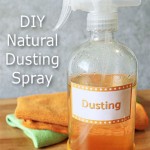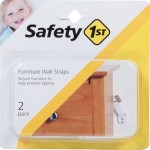How To Restore Cast Aluminum Patio Furniture
Cast aluminum patio furniture offers durability and aesthetic appeal, making it a popular choice for outdoor spaces. However, exposure to the elements can lead to oxidation, fading, and general wear and tear, diminishing its original luster. Restoring cast aluminum furniture not only rejuvenates its appearance but also extends its lifespan. This article provides a comprehensive guide on how to effectively restore cast aluminum patio furniture, covering essential preparation steps, cleaning techniques, paint removal methods, surface preparation, and painting procedures.
Initial Assessment and Preparation
Before embarking on the restoration process, a thorough assessment of the furniture's condition is crucial. This involves identifying the extent of damage, including oxidation, paint chipping, rust (if any other metals are present), and any structural issues. Gather the necessary tools and materials, which may include a wire brush, sandpaper (various grits), a scraper, a cleaning solution (such as dish soap and water or a specialized aluminum cleaner), a degreaser, masking tape, drop cloths, safety glasses, gloves, a respirator, aluminum primer, and aluminum paint. Ensure that the workspace is well-ventilated and protected, ideally outdoors or in a garage with open doors and windows. Cover the surrounding area with drop cloths to prevent paint splatters and debris from damaging the environment.
Begin by disassembling the furniture as much as possible. Remove cushions, hardware (screws, bolts, etc.), and any detachable parts. This will facilitate thorough cleaning and painting of individual components. Take photographs or make notes of how the furniture is assembled to ensure easy reassembly later. For pieces that cannot be disassembled, carefully mask off areas that should not be painted, such as joints or decorative elements.
Safety is paramount. Wear safety glasses to protect the eyes from debris and paint particles. Gloves are essential to protect the hands from harsh chemicals and sharp edges. A respirator is necessary to avoid inhaling harmful fumes from cleaning solutions, paint removers, and paints.
Cleaning and Removing Old Paint
The next step involves thoroughly cleaning the cast aluminum furniture to remove dirt, grime, and loose paint. Start by washing the furniture with a mild solution of dish soap and water. Use a soft brush or sponge to scrub the surface, paying attention to crevices and intricate details. Rinse thoroughly with clean water and allow the furniture to dry completely.
For stubborn dirt and grime, a specialized aluminum cleaner may be necessary. Follow the manufacturer's instructions carefully, as some cleaners can be corrosive if not used properly. Apply the cleaner to the surface, scrub gently, and rinse thoroughly.
If the furniture has significant paint chipping or peeling, it will be necessary to remove the old paint before applying a new coat. Several methods can be used for paint removal, each with its own advantages and disadvantages.
One common method involves using a chemical paint stripper. Apply the paint stripper to the surface according to the manufacturer's instructions. Allow the stripper to sit for the recommended amount of time, typically 15-30 minutes, until the paint begins to blister or soften. Use a scraper to carefully remove the softened paint. Be cautious not to gouge or scratch the aluminum surface. Multiple applications of paint stripper may be necessary to remove all traces of the old paint.
Another method is sanding. Use sandpaper with progressively finer grits to remove the paint. Start with a coarse grit (e.g., 80-grit) to remove the bulk of the paint, then switch to a medium grit (e.g., 120-grit) to smooth the surface. Finish with a fine grit (e.g., 220-grit) to create a smooth, even surface for painting. Sanding can be time-consuming, but it provides a controlled way to remove paint and prepare the surface. Power sanders can expedite the process, but exercise caution to avoid damaging the aluminum.
For intricate designs or hard-to-reach areas, a wire brush can be used to remove paint. Use a gentle scrubbing motion to avoid scratching the aluminum. A wire brush is particularly effective for removing paint from crevices and decorative details.
After removing the paint, thoroughly clean the furniture again with soap and water to remove any remaining residue from the paint stripper or sanding dust. Allow the furniture to dry completely.
Surface Preparation and Painting
Once the furniture is clean and free of old paint, the next step is to prepare the surface for painting. This involves sanding, cleaning, and applying a primer.
Even if the old paint has been completely removed, it is still essential to sand the surface to create a slightly rough texture that will allow the primer and paint to adhere properly. Use fine-grit sandpaper (e.g., 220-grit) to lightly sand the entire surface. This will also help to smooth out any imperfections or scratches.
After sanding, thoroughly clean the furniture again to remove any sanding dust. Use a tack cloth or a damp cloth to wipe down the surface. Ensure that the furniture is completely dry before proceeding to the next step.
Apply a high-quality aluminum primer to the surface. Primer serves several important functions: it helps the paint adhere to the aluminum, it provides a uniform surface for the paint, and it helps to prevent corrosion. Choose a primer specifically designed for aluminum, as other types of primer may not adhere properly.
Apply the primer in thin, even coats, following the manufacturer's instructions. Allow each coat to dry completely before applying the next. Typically, two coats of primer are recommended for optimal results. Use a brush or spray gun to apply the primer, depending on the size and complexity of the furniture. Spraying provides a smoother, more even finish, but brushing allows for greater control in intricate areas.
Once the primer is dry, lightly sand the surface with fine-grit sandpaper (e.g., 320-grit) to smooth out any imperfections. Wipe down the surface with a tack cloth to remove any sanding dust.
Now it is time to apply the paint. Choose a high-quality paint specifically designed for aluminum. Acrylic paints are a popular choice for outdoor furniture because they are durable, weather-resistant, and available in a wide range of colors. Consider using an enamel paint for added durability.
Apply the paint in thin, even coats, following the manufacturer's instructions. Avoid applying too much paint at once, as this can lead to drips and runs. Allow each coat to dry completely before applying the next. Typically, two or three coats of paint are recommended for optimal coverage and durability.
Use a brush or spray gun to apply the paint, depending on the size and complexity of the furniture. Spraying provides a smoother, more even finish, but brushing allows for greater control in intricate areas. If using a brush, use smooth, even strokes to avoid leaving brush marks. If using a spray gun, hold the gun at a consistent distance from the surface and move it in a smooth, sweeping motion.
After applying the final coat of paint, allow the furniture to dry completely before reassembling it. This may take several days, depending on the type of paint and the weather conditions. Ensure that the paint is fully cured before placing the furniture back in its intended location.
Hardware Restoration and Reassembly
While the paint is drying, take the opportunity to restore the hardware (screws, bolts, etc.). If the hardware is rusty or corroded, soak it in a rust remover or vinegar solution to loosen the corrosion. Use a wire brush or steel wool to scrub away the rust. If the hardware is beyond repair, replace it with new hardware that is compatible with the furniture.
Once the paint is completely dry, carefully reassemble the furniture, referring to the photographs or notes taken during the disassembly process. Tighten all screws and bolts securely to ensure that the furniture is stable and safe.
If the furniture originally had cushions or other fabric components, clean or replace them as needed. Consider using outdoor fabrics that are resistant to fading, mildew, and water damage. Adding new cushions or fabric can significantly enhance the appearance and comfort of the restored furniture.
Inspect the restored furniture for any imperfections or areas that may need touch-up painting. Address any issues promptly to prevent further damage. Apply a protective sealant or clear coat to the painted surface to provide added protection from the elements.
Regular maintenance, such as cleaning the furniture with soap and water and applying a protective sealant, will help to prolong its lifespan and maintain its appearance. Store the furniture indoors or cover it with waterproof covers during periods of inclement weather to prevent damage from the elements.

Restore And Protect Aluminum Yard Furniture In Minutes Protects Too

How To Restore Metal Outdoor Furniture So It S Better Than New

Finish Repair Of Aluminum Patio Furniture

How To Restore Metal Outdoor Furniture So It S Better Than New

Refresh And Restore Aluminum Table An Upcycled Hanger Scavenger Chic

How To Clean Cast Aluminum Patio Furniture Oakville Home Leisure

Expert Tips Cast Aluminum Patio Furniture Repair Maintenance Hauser S

How To Fix Faded Aluminum Patio Furniture Using Just One Common Household Item

How To Care For And Maintain Patio Furniture Made From Cast Aluminum

How To Clean Aluminium Outdoor Furniture Luxury Garden
Related Posts







